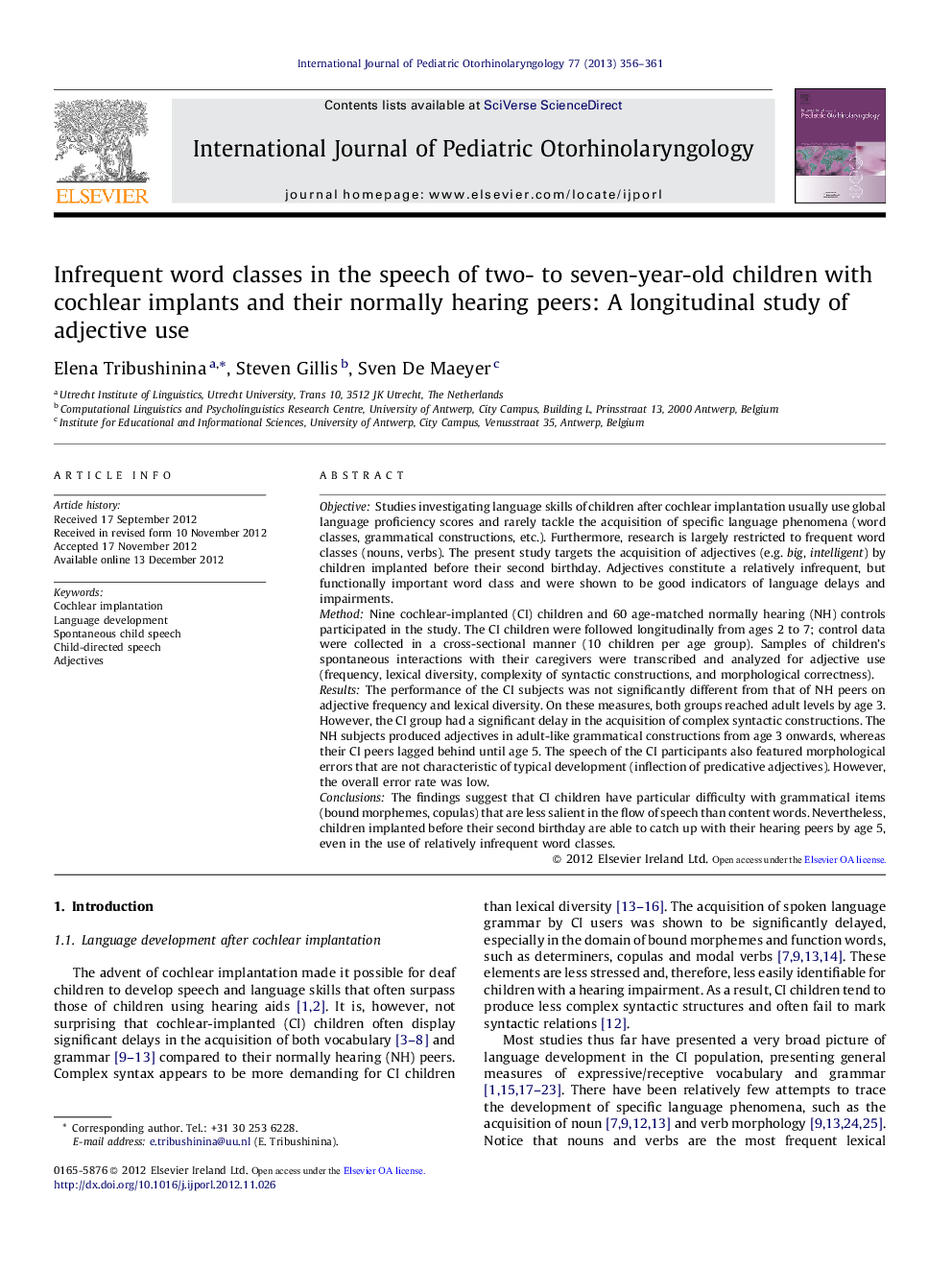| کد مقاله | کد نشریه | سال انتشار | مقاله انگلیسی | نسخه تمام متن |
|---|---|---|---|---|
| 6213638 | 1606022 | 2013 | 6 صفحه PDF | دانلود رایگان |
ObjectiveStudies investigating language skills of children after cochlear implantation usually use global language proficiency scores and rarely tackle the acquisition of specific language phenomena (word classes, grammatical constructions, etc.). Furthermore, research is largely restricted to frequent word classes (nouns, verbs). The present study targets the acquisition of adjectives (e.g. big, intelligent) by children implanted before their second birthday. Adjectives constitute a relatively infrequent, but functionally important word class and were shown to be good indicators of language delays and impairments.MethodNine cochlear-implanted (CI) children and 60 age-matched normally hearing (NH) controls participated in the study. The CI children were followed longitudinally from ages 2 to 7; control data were collected in a cross-sectional manner (10 children per age group). Samples of children's spontaneous interactions with their caregivers were transcribed and analyzed for adjective use (frequency, lexical diversity, complexity of syntactic constructions, and morphological correctness).ResultsThe performance of the CI subjects was not significantly different from that of NH peers on adjective frequency and lexical diversity. On these measures, both groups reached adult levels by age 3. However, the CI group had a significant delay in the acquisition of complex syntactic constructions. The NH subjects produced adjectives in adult-like grammatical constructions from age 3 onwards, whereas their CI peers lagged behind until age 5. The speech of the CI participants also featured morphological errors that are not characteristic of typical development (inflection of predicative adjectives). However, the overall error rate was low.ConclusionsThe findings suggest that CI children have particular difficulty with grammatical items (bound morphemes, copulas) that are less salient in the flow of speech than content words. Nevertheless, children implanted before their second birthday are able to catch up with their hearing peers by age 5, even in the use of relatively infrequent word classes.
Journal: International Journal of Pediatric Otorhinolaryngology - Volume 77, Issue 3, March 2013, Pages 356-361
